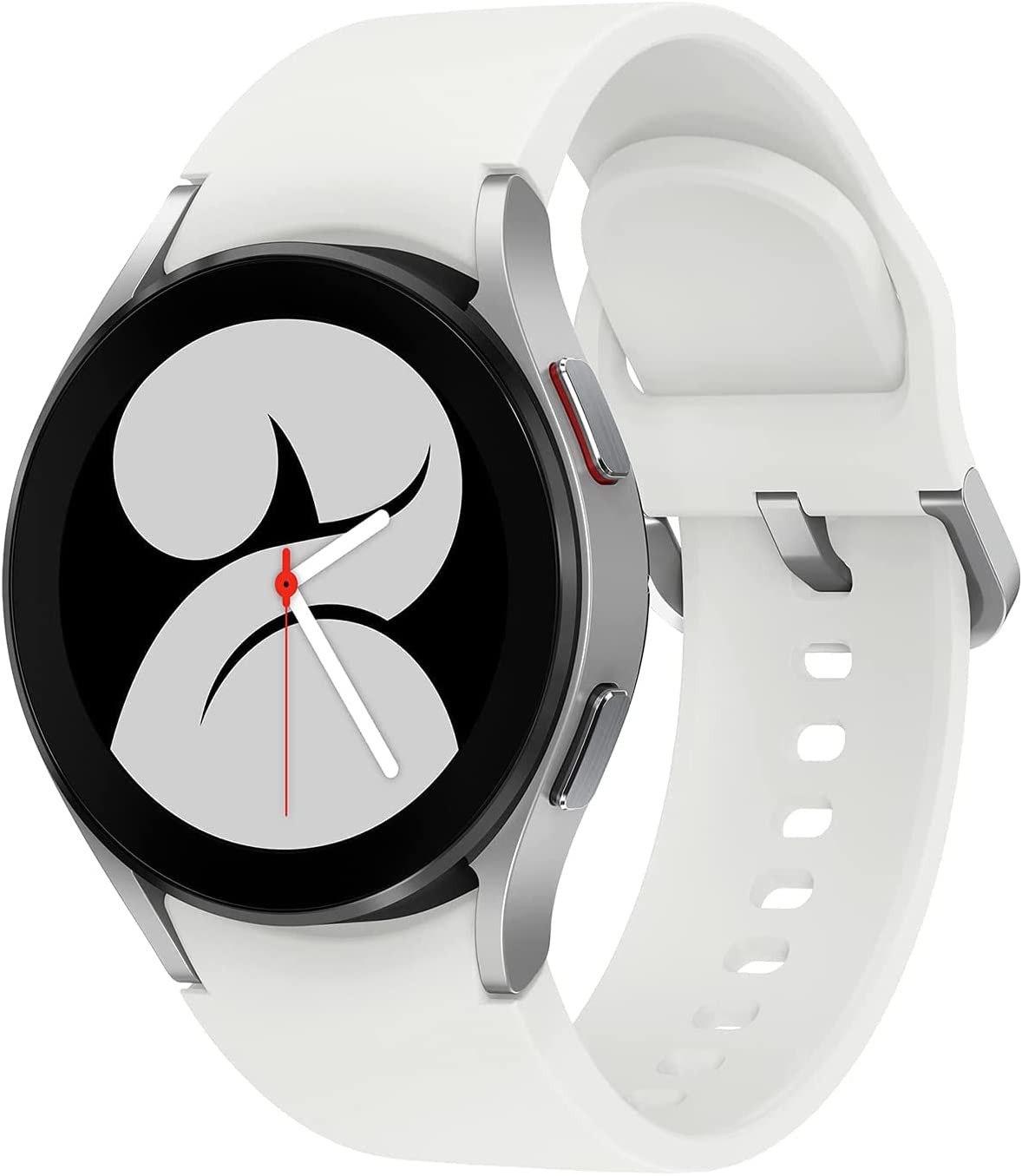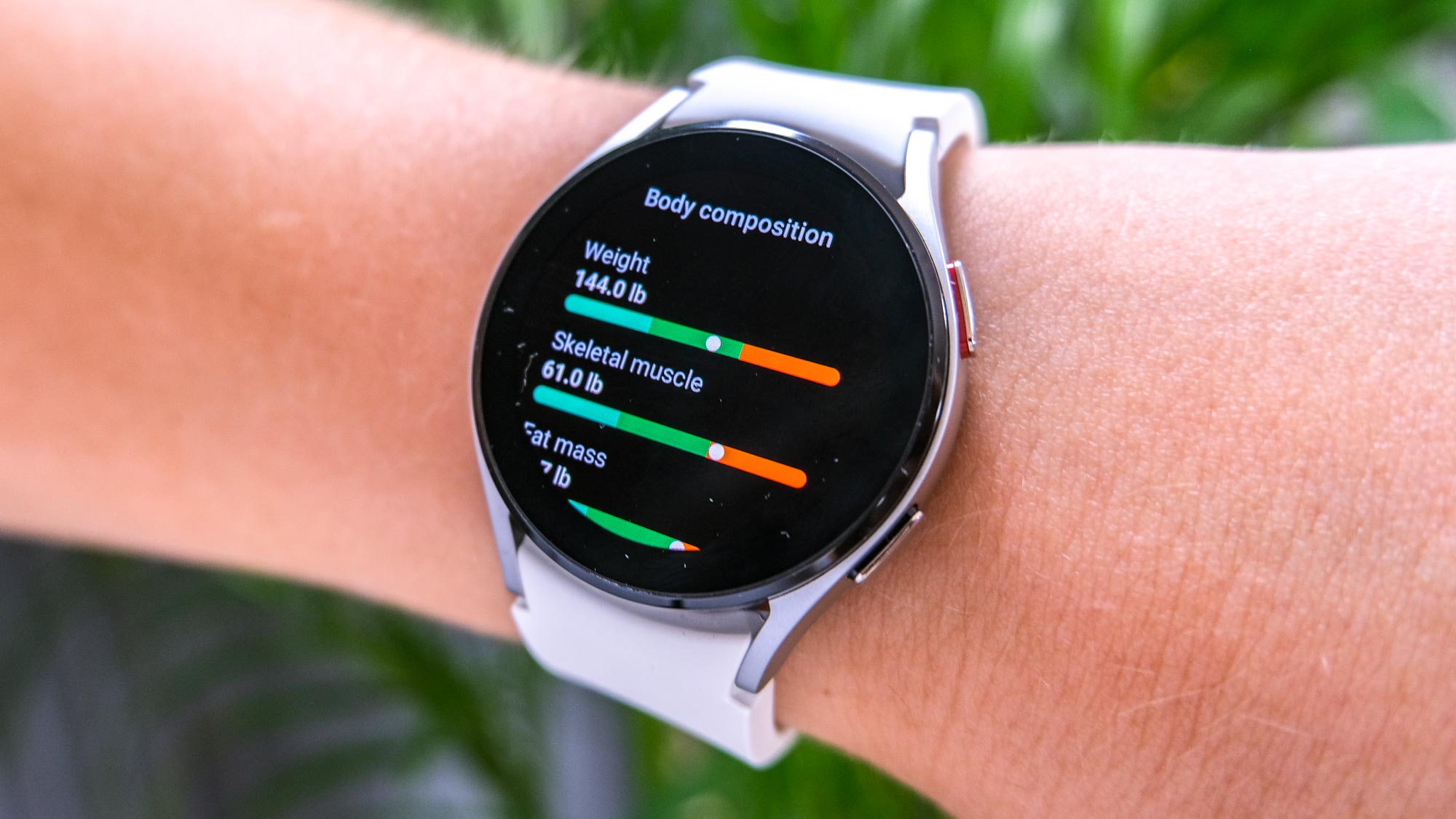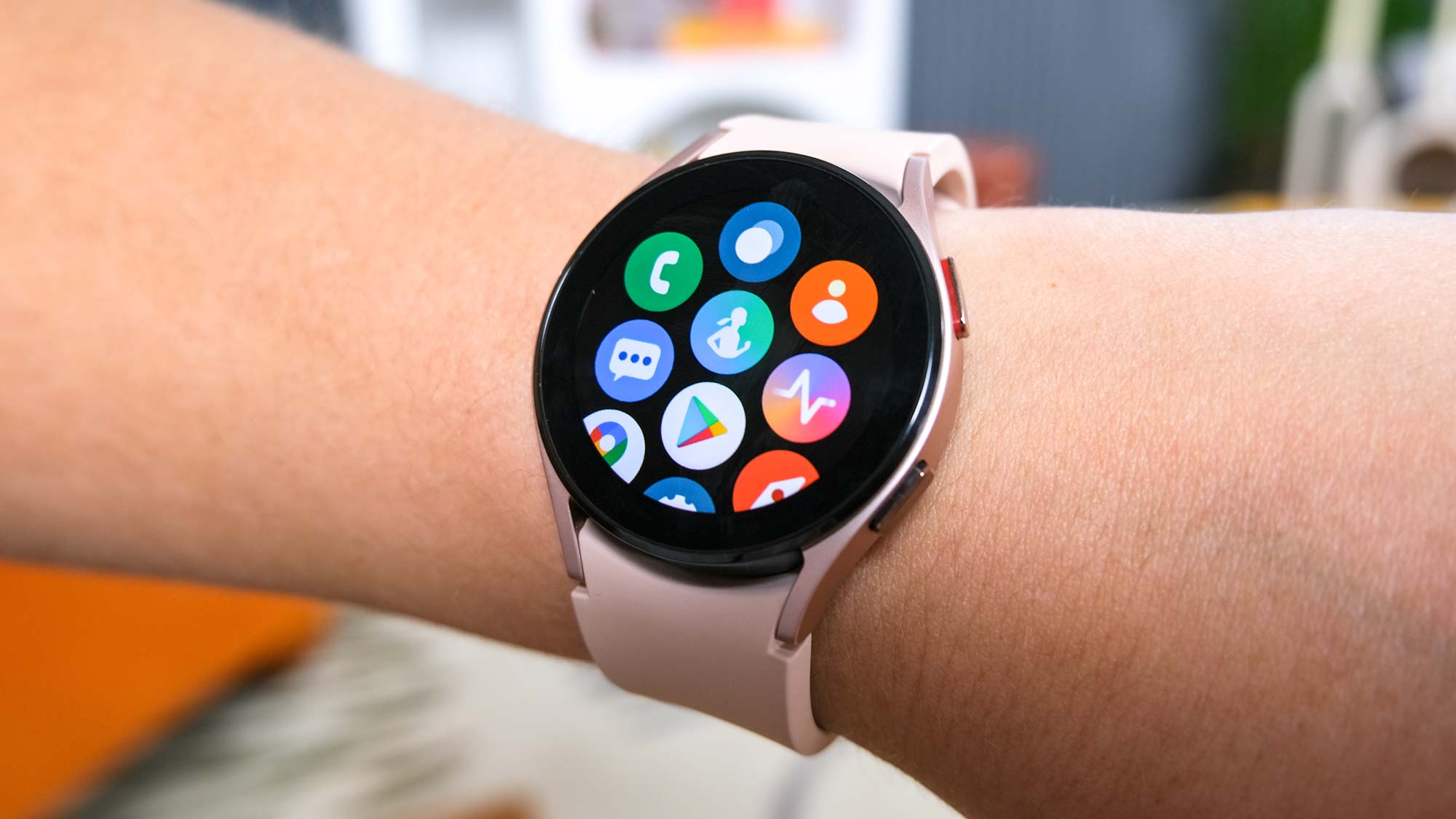Samsung Galaxy Watch 4 vs. Galaxy Watch Active 2: What are the differences?
Everything you need to know about how the Samsung Galaxy Watch 4 vs. Galaxy Watch Active 2 compare

The Galaxy Watch 4 packs a 3-in-1 health sensor for measuring heart rate, taking ECGs and reading body composition — it was the first major smartwatch to offer BIA. Though it's older than the Galaxy Watch 5, missing out a few upgrades, it's a steal if you find it for a low price. You can also opt for the Classic model, with a physical bezel.
Pros
- New Wear OS feels like Tizen, but with more apps
- First major smartwatch with body composition analysis
- Affordable
Cons
- Battery life can be fickle

If you spot the Galaxy Watch Active 2 at a steep discount — I'm talking around $150 — it's a score. It's remained one of the best smartwatches for several years in, plus Samsung stills support it with software upgrades for another through years. The downside? It only runs Tizen, not the merged Wear OS platform found on the Galaxy Watch 4.
Pros
- Good battery life
- Automatic workout-tracking
- Offline Spotify storage
Cons
- No Wear OS
- Limited app support
The differences between Samsung Galaxy Watch 4 vs. Samsung Galaxy Watch Active 2 show just how much Samsung's smartwatch has come.
The Samsung Galaxy Watch 4 brings versatile design options, body composition analysis and an entirely refreshed user experience thanks to the merged Wear OS software. It was once the best smartwatch ever for Android users, though it has been followed up by the Galaxy Watch 5.
One big difference between the Galaxy Watch 5 vs. Galaxy Watch 4 is that the Galaxy Watch 5 doesn't have a model with a rotating bezel. As such, the Galaxy Watch 4 Classic looks more like the Samsung Galaxy Watch 3 — rotating bezel and all — the standard Galaxy Watch 4 is an extension of the Active line, minus the Active branding.
So for the sake of this face-off, we'll be looking at how the $249 Galaxy Watch 4 compares to the Samsung Galaxy Watch Active 2, whether you're wondering about upgrading or if you should still buy the two-year-old model on sale. Here's what to know about the Samsung Galaxy Watch 4 vs. Galaxy Watch Active 2.
Samsung Galaxy Watch 4 vs. Galaxy Watch Active 2: Specs compared
| Header Cell - Column 0 | Samsung Galaxy Watch 4 | Samsung Galaxy Watch Active 2 |
|---|---|---|
| Size options | 40mm, 44mm | 40mm, 44mm |
| Display resolution | 396 x 396 (40mm), 450 x 450 (44mm) | 360 x 360 (40mm), 360 x 360 (44mm) |
| Colors | Black, Silver, Pink Gold, Green | Silver, Black, Pink Gold, Stainless |
| Storage | 16GB | 4GB |
| Software | Wear OS 3 | Tizen OS |
| Processor | Exynos W920 | Exynos 9110 |
| Battery life | 40 hours maximum | 60 hours maximum |
| GPS | Yes | Yes |
| LTE | Yes (optional) | Yes (optional) |
| Special features | Body composition analysis, ECG, heart rate monitoring, VO2 Max readings | ECG, heart rate monitoring, VO2 Max readings |
Samsung Galaxy Watch 4 vs. Galaxy Watch Active 2: Price and availability
The Galaxy Watch 4 starts at $249.99 for the 40mm Bluetooth model and $299.99 for the 40mm LTE model. The 44mm model costs $279.99 for Bluetooth and $329.99 for LTE. It's available as of August 27, 2021.
When it first launched in 2019, the Galaxy Watch Active 2 cost $249 for the 40mm size, and $269 for the 44mm model. Now, however, you can find the Galaxy Watch Active 2 on sale as one of the best cheap smartwatches. The last we checked, you can buy certain colors and configurations for less than $200.
Samsung Galaxy Watch 4 vs. Galaxy Watch Active 2: Design
The Galaxy Watch 4 and Galaxy Watch Active 2 come in two sizes, 40-mm and 44-mm, which are well-sized for both small and larger wrists. Both sport a round case and screen, like a traditional (though sporty-looking) watch.
Get instant access to breaking news, the hottest reviews, great deals and helpful tips.

Both watches sport beautiful OLED displays. The newer Galaxy Watch's screen is a little higher-res (396 x 396) than the Galaxy Watch (360 x 360), but most people won't find the difference noticeable. Plus Samsung maintained the thick, digital display bezel, making the two watch screens look extremely similar.

Now for the differences. The Galaxy Watch 4 has a redesigned frame with flat, not curved sides. There's also a gapless transition from the smartwatch chassis to the included silicone straps. The uniform crown buttons come in an oblong shape, rather than one round and one oval-shaped one, too.
Samsung Galaxy Watch 4 vs. Galaxy Watch Active 2: Health and fitness
Is the Samsung Galaxy Watch 4 as capable a health tool as the Galaxy Watch Active 2? When Samsung introduced the Galaxy Watch Active 2, it nipped at the Apple Watch's heels with an ECG sensor of its own, which later approved FDA approval. It even welcomed blood pressure reading, though that feature still isn't available to U.S. customers.

Not only does the Samsung Galaxy Watch 4 have all these health-monitoring tools, it adds to the arsenal with body composition analysis and better sleep tracking analysis. Body composition is read through BIA, which estimates things like body fat percent, skeletal muscle and body water weight using a weak electrical current. Sleep tracking data benefits from blood oxygen being read once a minute, promising improved accuracy compared to our overnight experiences with the Galaxy Watch Active 2.

When it comes to working out, both watches track your heart rate, calories burned and time elapsed. Each offer automatic workout tracking for certain exercises, meaning you don't have to manually start an outdoor walk, for example. And although the Galaxy Watch 4 has different software than the Galaxy Watch Active 2 (more on that in a minute,) both have a built-in running coach for helping you meet your speed and endurance goals.
Samsung Galaxy Watch 4 vs. Galaxy Watch Active 2: Software
Perhaps the Galaxy Watch 4's most noteworthy change is to its software. Samsung conceded the Tizen OS found on the Galaxy Watch Active 2 and every other previous Galaxy Watch to a unified version of Google's Wear OS. Wear OS earned a bad reputation over the years, but the platform has been totally refreshed for the next wave of wearable computing.

Much like smartphone makers can customize Google's Android OS, Wear OS can be manipulated to maintain device coherence. Samsung's One UI skin for the Galaxy Watch 4 makes it more of an extension of Samsung smartphones than Galaxy Watch models have been in the past. Apple has long excelled in creating a sense of ecosystem, so it's encouraging to see Samsung making efforts for the same unity.
That said, you'll find remnants of Tizen on the Galaxy Watch 4. Several of Samsung's native programs are favored, but you'll find a slew of Google services on the new smartwatch. Until a Google Pixel Watch appears, this makes the latest Galaxy Watch a killer Pixel phone accessory.
Samsung Galaxy Watch 4 vs. Galaxy Watch Active 2: Battery life
Samsung used to prioritize battery life in its smartwatches. The Galaxy Watch Active 2 can last 36 hours with its always-on display activated, and up to three days without it. In our initial testing, we averaged about 48 hours, even with frequent activity tracking.
Last year, Samsung lowered battery life expectations. It estimated the Galaxy Watch 3's battery life for two days, but as mentioned in our guide to the Samsung Galaxy Watch 4 vs. Galaxy Watch 3, I needed to charge it every 24 hours. The Galaxy Watch 4 is estimated for about two days too, but in my experience so far, I need to charge it once a day to avoid entering low power mode.
Samsung Galaxy Watch 4 vs. Galaxy Watch Active 2: Bottom line
It's safe to say the Samsung Galaxy Watch 4 is an impressive upgrade over the Galaxy Watch Active 2. Though a smartwatch might not need to be replaced every two years, there's enough different about the newest smartwatch that you might find worth $250. The new software, sleeker design and boosted health features make the Samsung Galaxy Watch 4 more than an average, incremental upgrade.
That said, if you spot the Galaxy Watch Active 2 at a steep discount — I'm talking around $150 — it's a score. It's remained one of the best smartwatches two years in, plus Samsung will still support it with software upgrades for three more years even though it'll still be using Tizen, rather than WearOS.

Kate Kozuch is the managing editor of social and video at Tom’s Guide. She writes about smartwatches, TVs, audio devices, and some cooking appliances, too. Kate appears on Fox News to talk tech trends and runs the Tom's Guide TikTok account, which you should be following if you don't already. When she’s not filming tech videos, you can find her taking up a new sport, mastering the NYT Crossword or channeling her inner celebrity chef.
